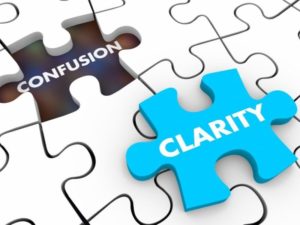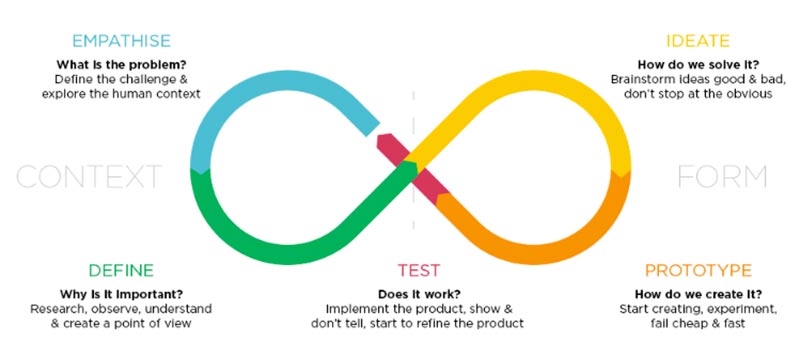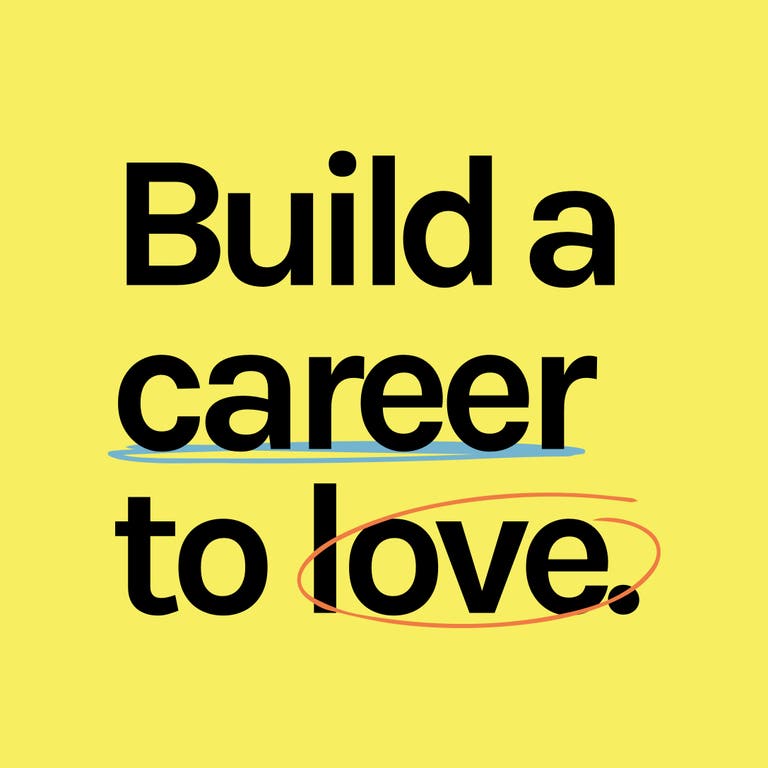About 6 years ago I hit the eject button on my corporate career. After decades of making my career my life, I had finally hit a wall and needed a change. To what though? I can honestly say – I had no plan, not much saved for the ‘rainy day’ that had unexpectedly arrived, and a headful of emotion.
In making that choice, I discovered that adapting your career under pressure is more than tough – it can be quite scary. When it’s one of your most valuable assets and you’ve invested decades in it – chucking in the towel without a plan, can seem like a high-risk manoeuvre.
But you know what’s worse for most people? Staying where they are, when they no longer feel psychologically safe, or you are not in a ‘healthy long term relationship’ with your organisation. And hence, how my new story began...
Through my work since founding START Now, I’ve worked with 1000s of people on their own journey of adaptation – many individuals have trusted me with helping them put back together the puzzle of their career, when it was in pieces. Sometimes I’ve done multi-day workshops with them, sometimes I’ve just had quiet coaching conversations over coffee, and sometimes I’ve been inside organisations and worked with leaders and teams.
I never really saw this as my ‘real job’ to be honest – it was always a bit of a sideline, to the more interesting work that I got to do as a solopreneur, consulting to businesses using my skills in Human Centred Design gained from Stanford. Being a ‘career coach’ was never a title I adopted, it somehow just didn’t seem to fit with the story of my career and seemed somehow less, well let’s just say, glamorous.
But lately, I’ve started to take a different view. And here’s why:
As the world has become more disrupted both economically, environmentally and physically – so too have people’s ideals of what ‘being happy in their work’ means.
We now know (and keep hearing) that a phenomenal 80% of people are not engaged in their work. There is a growing sense that people are only staying where they are, because the ‘grass on the other side just ain’t that much greener. So why move.
And as the workforce is getting younger, what purpose, reward & success means to the majority of our workforce – has been completely reframed.
According to HBR, if you want to keep your employees, you are now going to have bridge the skills gap schools are leaving and offer on-the-job training as a core part of your offering, whilst maintaining cultures that are psychologically safe so you minimise stress, and reward leaders who have – and build – emotional intelligence.
So the puzzle just keeps getting bigger. And so too, must our solutions.
What started out as a hobby-job, now has more appeal – as it has a bigger purpose. There is now enough scope in the problem space, to lure me in for good. I’m invested. “How might I” – using all my experiences in leadership, design and strategy – and the knowledge I’ve gained working in this space, play a bigger part in helping people navigate this ever-growing puzzle?
Well to start, I’ll share some insight & tips with you as leaders & employers about why so many of your staff might be disengaged, and you therefore get blind-sided when they leave.
This is what I have learned from 6 years of working with people who were desperate to leave, companies like yours.
Who were seriously anxious, because they didn’t feel confident talking to leaders like you about creating new options.
And frankly, stressed and afraid because they didn’t have anyone else to turn to. Admitting failure or even fear you see, isn’t an option for many people.
- Notice the tipping point The first is a no-brainer. Watch closely. Keep an eye on your ‘assets’. And you will see it coming. The tipping point. It will be when your favourite staff member suddenly has an inconsistent shift in behaviour. Or they suddenly speak up less in meetings. Or are suddenly more emotional (yes, men and women). This is the first sign that something has shifted for them. And it’s time to listen more closely. This is the first crack – and the longer you leave it, the deeper the impact for you (on productivity) and them (on mental & physical wellbeing). Be courageous, find out what’s going on, before it’s too late.
- Create value exchange One thing I learned from 10 years working in the stock-market, its that the price has to be right when you are in the business of ‘value exchange’. And that’s what being an employer is. You have to trade what you offer, with what they offer. If you can’t meet the needs of your employees – and it starts from actually understanding their needs, they will sell out. Start listening – what does ‘reward’ mean for them? What does ‘having impact’ mean for them? And what does ‘meaningful work’ mean for them? And – most importantly – what is it that they are able to truly offer thats of value to you? Most people I work with can’t tell me. And if they can’t tell me, they can’t tell you. When coached though, it is evident they have so much more to offer, than they are able to articulate. They need some help with this. They may lack confidence to speak ‘beyond their boundaries’. Or they may just lack confidence, period. If you can figure out what the true value on offer is you may have a more valuable transaction in play than you realise. But whatever you do, don’t offer an under-valued contract – that’s a sure way to lose the deal.
- Navigating Craftsmanship & Leadership This is an interesting one. I help so many people figure out where they are on the trajectory between being a ‘craftsperson’ and a ‘leader’. You see with some leaders in organisations, their unconscious bias kicks in and they want everyone to be leaders, just like them. But funnily enough, not everyone wants this. Some people, just want to learn to be the best, at their craft. Or maybe more than one craft. They want to learn skills that make them feel purposeful. They want to solve problems. They want to make stuff that works and contributes to the world. Being a leader? That’s for someone else. So figure out who in your team is happy just staying right where they are, but getting really really good at what they do. Like the best in the world. If you can navigate through your organisation and get your team of ‘craftspeople’ and ‘leaders’ onto the right side, and support them to grow, you will have a healthy, and sustainable organisation.
- Purpose + Proposition fit We are all – employers and employees – trying to simultaneously solve problems, have impact, and gain payback. The alignment comes, when you can match the Purpose that drives an employee, with the Proposition of your organisation. If you can offer staff problems to solve and equitable payback that brings them purpose AND that aligns with the proposition and challenges your organisation is facing, you will have what I call ‘human/company fit’. It’s a similar concept to what designers deploy when trying to find ‘product/market fit’ – you have to experiment with this, and figure it not for – but with – each person. Don’t just hire people for their skills – hire people for their intention.
- The dance of ‘love and need’ We all have reasons why we go to work, and these start off – like a hierarchy – normally with getting the basic essential needs met. Like getting paid, and feeling competent. But then we want more. We want to love where we work. We need our emotional needs met. And this includes feelings. Scary, but real. All humans – and everyone I have met and supported to change careers – have left organisations because either their emotions – or their creativity – (or worse both) were suppressed. What they love doing, and what brings them emotional joy, is absent. It’s a basic idea – and one that we are all familiar with in our other core relationship in our lives – our partner and family. If we just provide a home and food, it’s not enough. So too with work. Figure out what your employees love, what brings them joy, what lights them up, and then your relationship will transcend to the top of the triangle. When Needs + Love are met by an employer – and it is a dance – because it’s constantly changing – excitement returns to the relationship and possibilities are endless.
The other thing I’ve done, is made it really really easy for employees to figure out what they want. Because we both have to step up. Employers need to work harder at what they offer, and employees need to get smarter – about who they are, what value they can create, and what they want.
So I’ve created an online course that’s called “How to Build a Career to Love” with the hope, that more people will know what true happiness at work means to them, and can navigate their way towards it effectively. Saving the company the cost and struggle of having to do it for them.
Because just like you as a leader, this is hard for many people to do on their own. You have to have a little bit of help. And you have to put the work in.
This new toolbox gives everybody the opportunity – privately and affordably – to figure out what work brings them joy. And if you’re a really smart leader, you won’t care whether thats within your organisation – or another. Because as long as people are engaged, fulfilled and productive, we all win.
There is a great saying I heard once. “Life is like a puzzle – never waste time trying to place the pieces where they don’t fit”.





